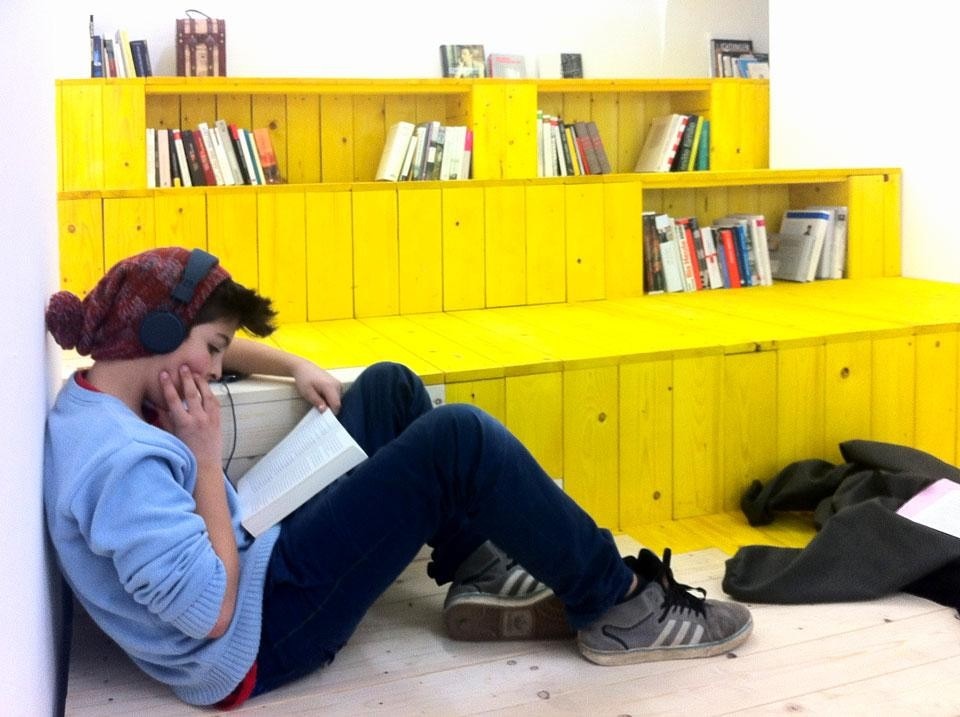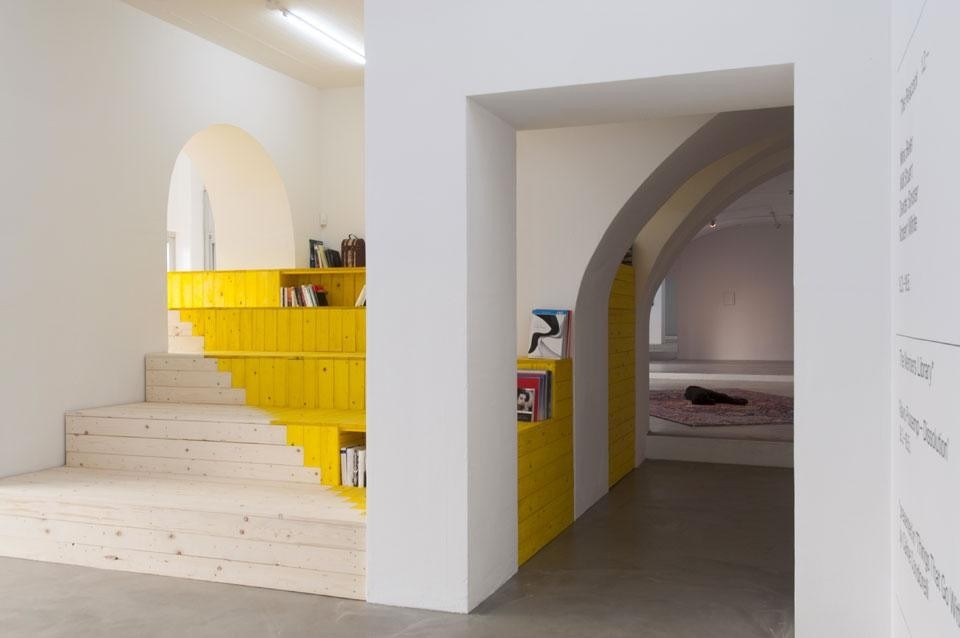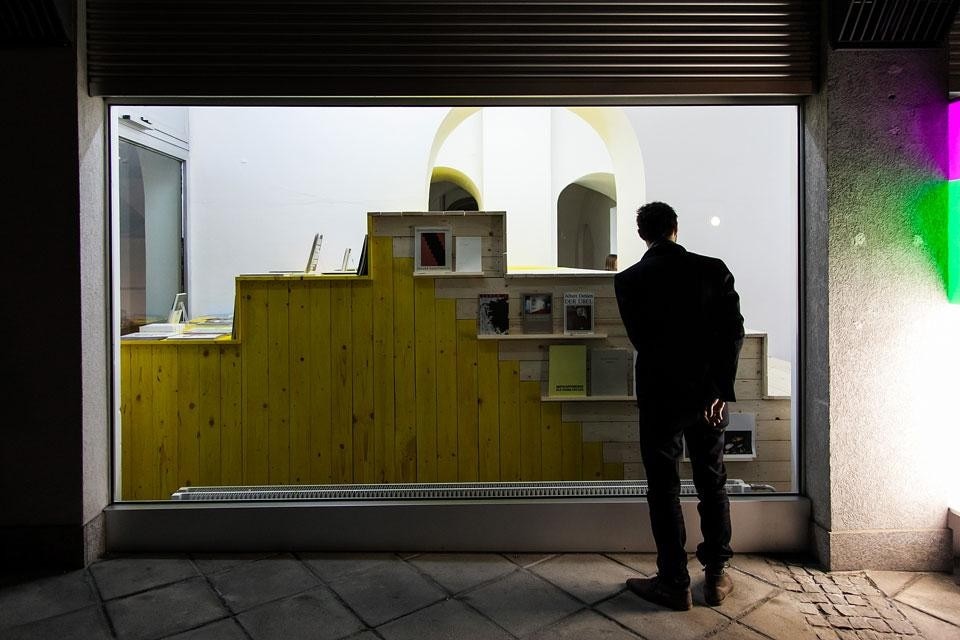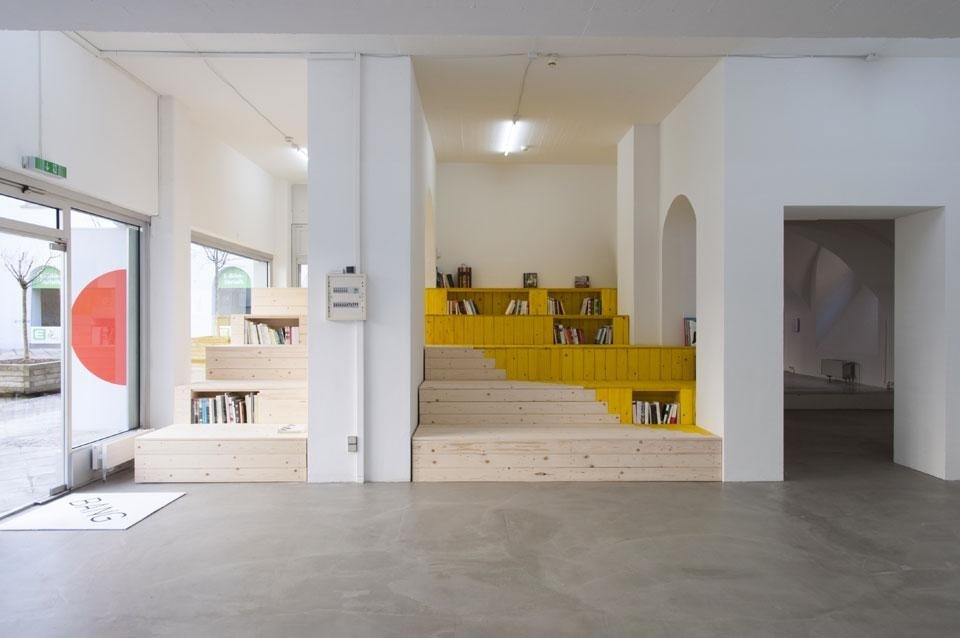Despite the current abundance of seating structures on most cultural institutions, verticality still dominates the bodily occupation of these places, which is accompanied by a sense of transit — and transience — and of multifarious consumption.
It is not very often that we see a reclined or sprawled adult in a museum, just looking, reading a book or leafing through a magazine, transferring the commodity of the domestic environment into an institutional context. Such rarity is part of what makes the new Member's Reading Room of the Grazer Kunstverein a remarkable construction.
Conceived by the London-based artist Céline Condorelli and developed together with the designer Harry Thaller as their first collaborative project, the reading room is located on the extension of the original area of the Kunstverein. Facing its new storefront, and occupying the left-hand side of lobby, the library materializes the institution's commitment to focus the 2013 programme on the production and display of language, by offering an open location that gives time for publications to be consulted, shared and acquired.
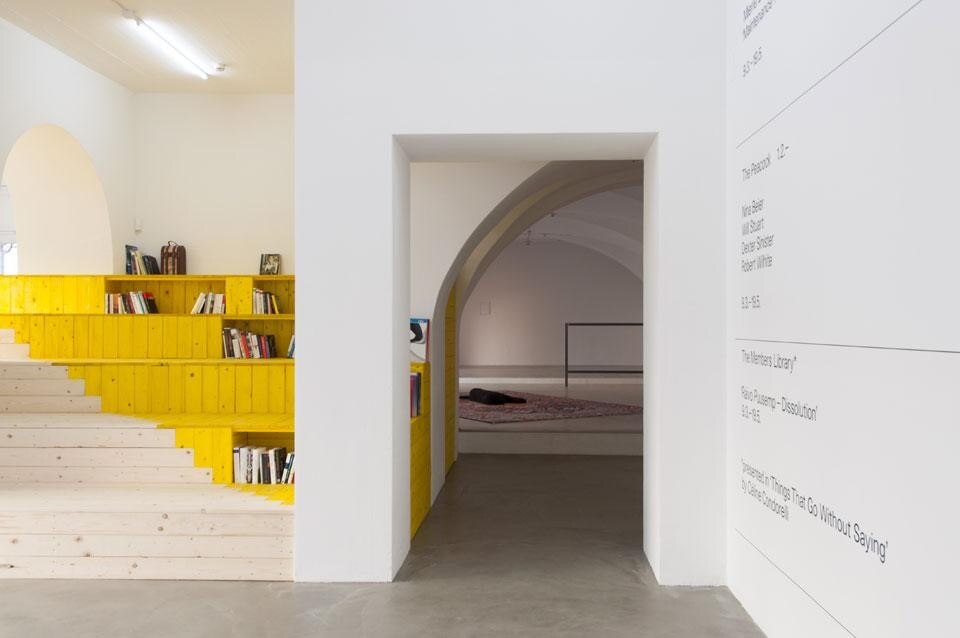
Another source was the gallery that Christopher D'Arcangelo, Peter Nadin and Nick Lawson ran in New York in the late 1970s, where artists were invited to respond to the previously existent conditions and works in the gallery, in a accumulative logic that saw as key constituent elements not only the artists, but also the space's area, the time used to develop it, and its materials (which were, as in this piece, all duly credited).
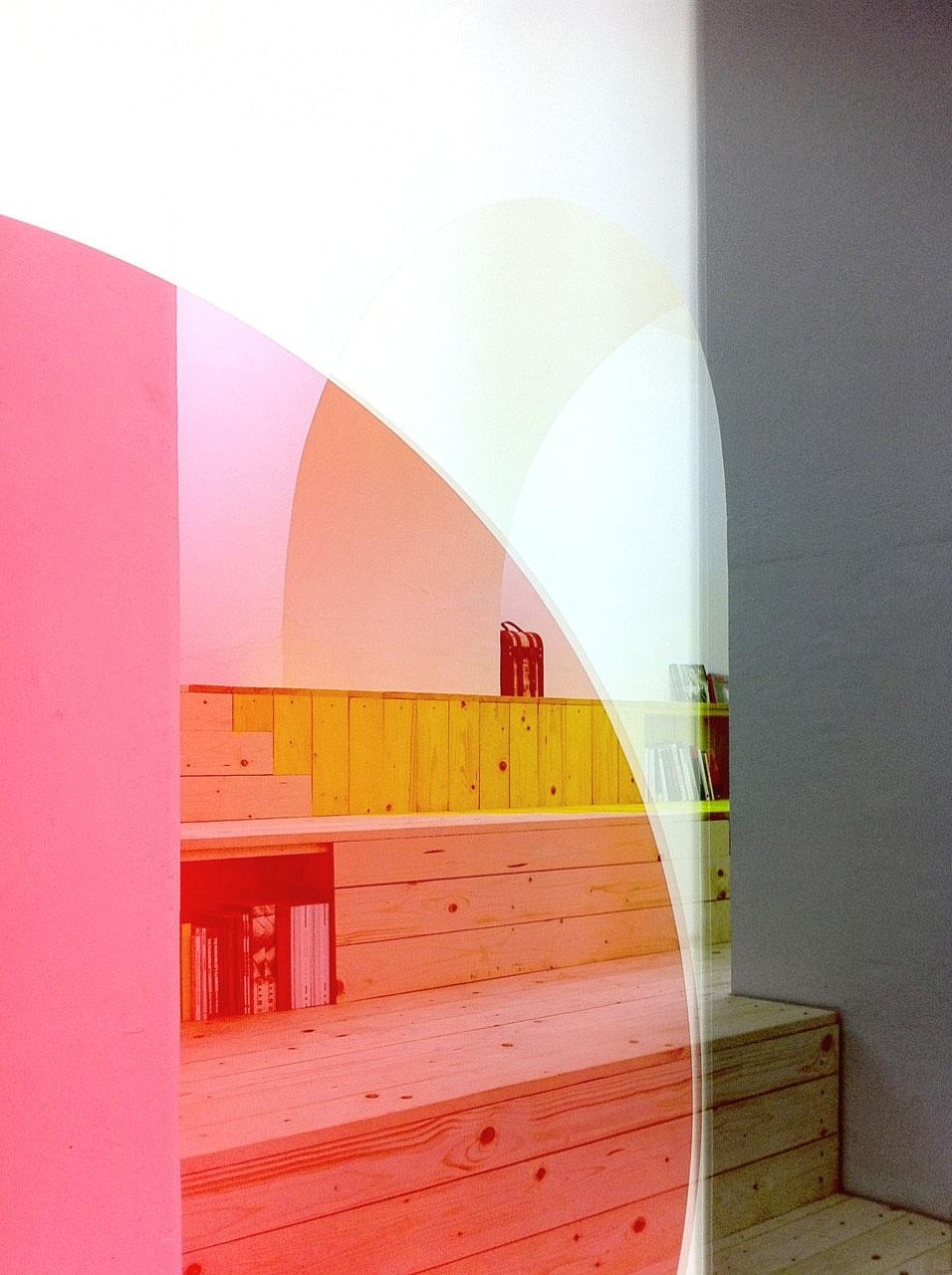
By coincidence, Pistoletto was also a central reference for the project. Condorelli and Thaler's Member's Library is part of a series developed by Condorelli entitled Additionals, which consists of different prop-like objects, quasi-functional structures that are halfway between furniture and architecture. These draw from Pistoletto's Minus Objects (1965/66), a series of thirty pieces that have a minimal appearance — evoking more than what they present —, produced with simple materials, with a petty commercial attractiveness.
Due to its form, materials and location, the installation becomes a place for invention of a collective action using reading as a starting point
